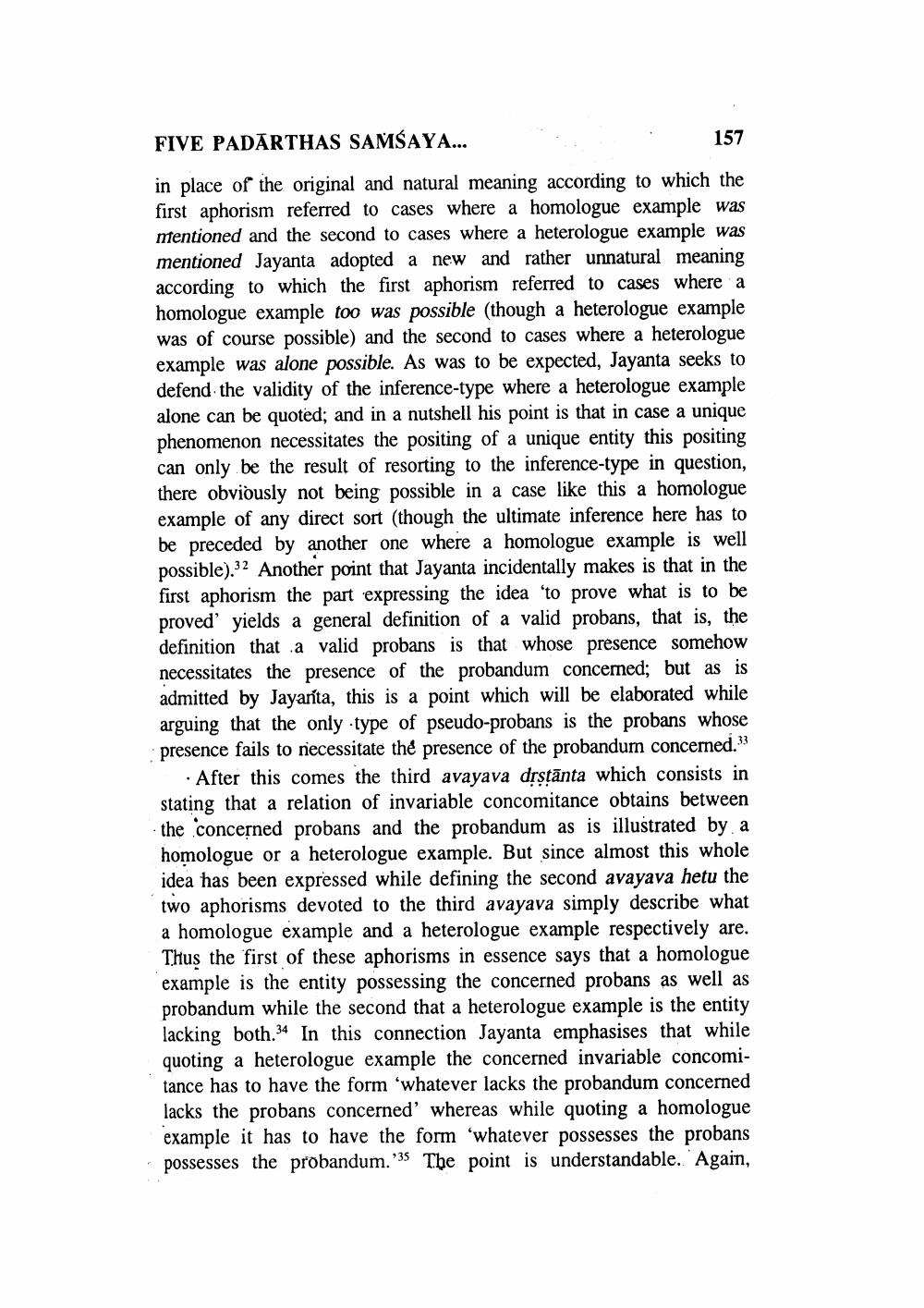________________
FIVE PADĀRTHAS SAMSAYA...
157
in place of the original and natural meaning according to which the first aphorism referred to cases where a homologue example was mentioned and the second to cases where a heterologue example was mentioned Jayanta adopted a new and rather unnatural meaning according to which the first aphorism referred to cases where a homologue example too was possible (though a heterologue example was of course possible) and the second to cases where a heterologue example was alone possible. As was to be expected, Jayanta seeks to defend the validity of the inference-type where a heterologue example alone can be quoted; and in a nutshell his point is that in case a unique phenomenon necessitates the positing of a unique entity this positing can only be the result of resorting to the inference-type in question, there obviously not being possible in a case like this a homologue example of any direct sort (though the ultimate inference here has to be preceded by another one where a homologue example is well possible).32 Another point that Jayanta incidentally makes is that in the first aphorism the part expressing the idea to prove what is to be proved yields a general definition of a valid probans, that is, the definition that a valid probans is that whose presence somehow necessitates the presence of the probandum concerned; but as is admitted by Jayanta, this is a point which will be elaborated while arguing that the only type of pseudo-probans is the probans whose presence fails to necessitate the presence of the probandum concerned."
· After this comes the third avayava drstānta which consists in stating that a relation of invariable concomitance obtains between - the concerned probans and the probandum as is illustrated by a homologue or a heterologue example. But since almost this whole idea has been expressed while defining the second avayava hetu the two aphorisms devoted to the third avayava simply describe what a homologue example and a heterologue example respectively are. Thus the first of these aphorisms in essence says that a homologue example is the entity possessing the concerned probans as well as probandum while the second that a heterologue example is the entity lacking both.34 In this connection Jayanta emphasises that while quoting a heterologue example the concerned invariable concomitance has to have the form 'whatever lacks the probandum concerned lacks the probans concerned' whereas while quoting a homologue example it has to have the form 'whatever possesses the probans possesses the probandum.35 The point is understandable. Again,




